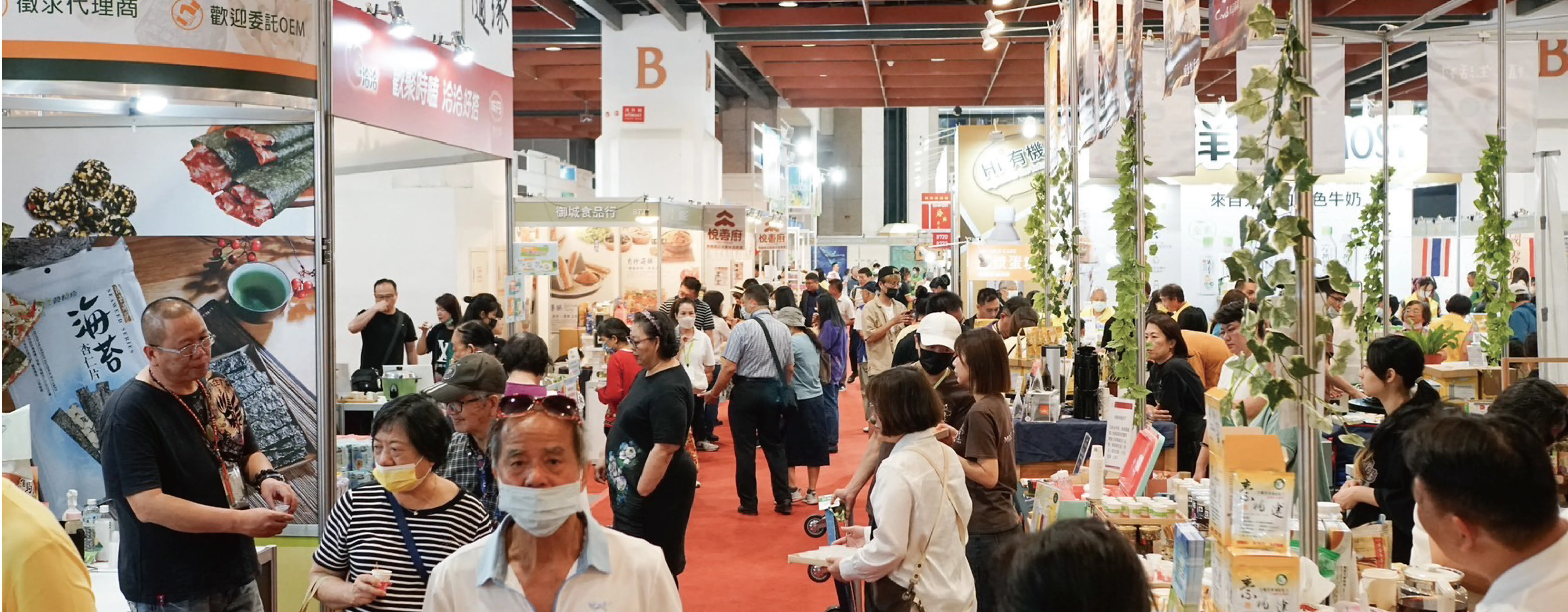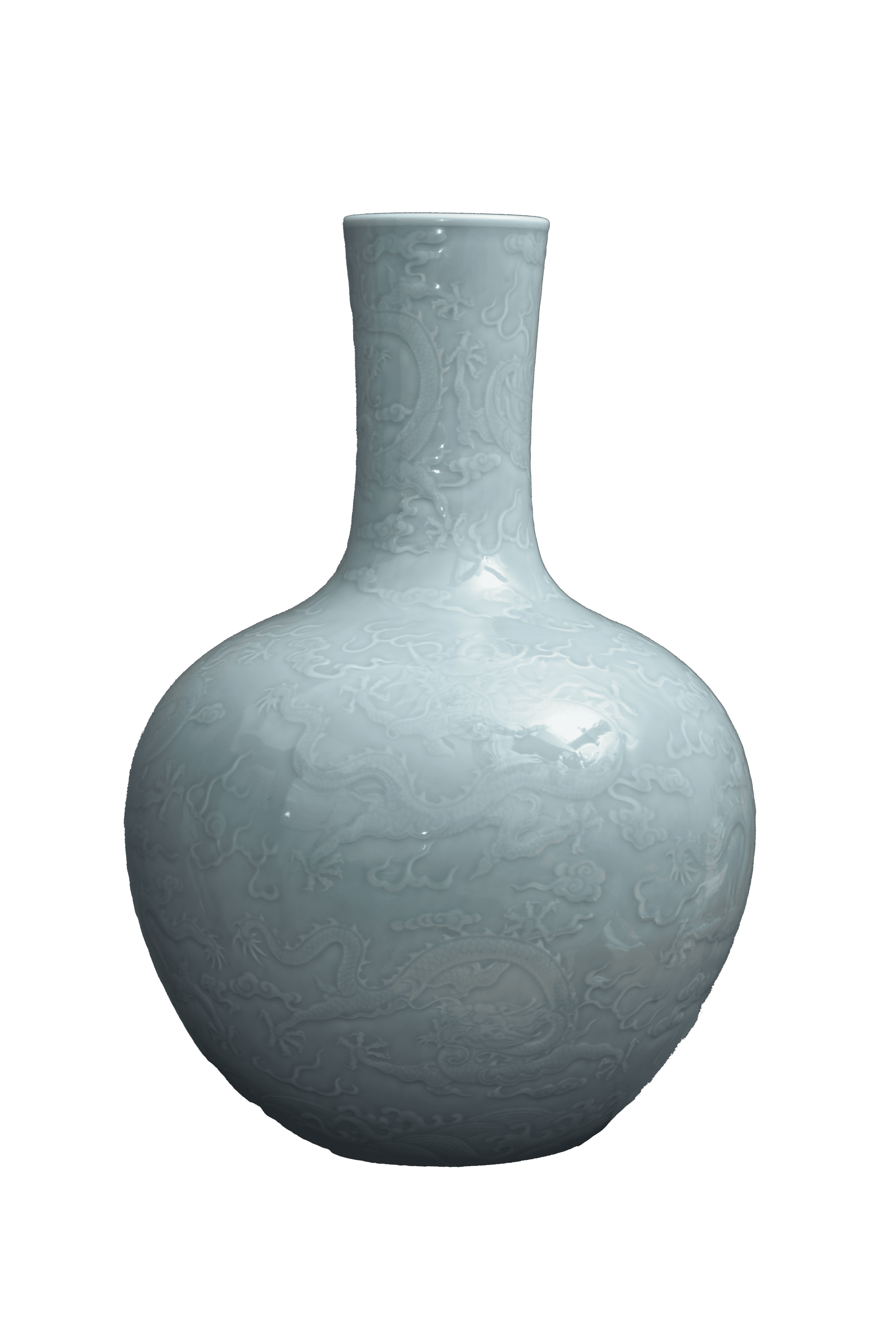


| 時代: | 清朝乾隆時期 (西元1735-1799) |
| 出土地點: | 傳世品 |
| 尺寸: | 高度:55 cm 口沿直徑:12 cm 腹部直徑:約38 cm 重量:10,585 g |
| 質地: | 瓷器 |
| 數量: | 1 |
口沿微外撇、長頸、溜肩、圓腹、縮足,修胎精緻。頸部盤據兩條軋道刻海水雲龍,器身主體則有軋道刻七海水雲龍紋戲珠,龍紋形貌似清朝乾隆中、後期的乾隆皇帝,龍首頂部帶梅花包,龍爪奮張有力,天球瓶正面上方有一軋道刻正面龍紋,下方有一側面龍紋,其餘五龍矯健穿梭於如意雲彩和火焰紋、火焰珠間,足底外圍有軋道刻標準清朝乾隆時期海濤紋。
The vase features a slightly flared mouth, a long neck, a sleek shoulder, a rounded body, and a recessed foot, showcasing meticulous construction. Two decorative raised bands encircle the neck, each adorned with sea and cloud motifs of dragons, while the main body of the vase boasts seven intricately carved bands of sea and cloud motifs where dragons play with pearls. The dragon motifs on the vase resemble those commonly found on works from the mid-to-late Qianlong period of the Qing Dynasty. The dragons exhibit the characteristics of dragons seen during the Qianlong Emperor's reign, with a Mei-flower ornament on their heads and powerful, well-defined claws. The front of the vase features a frontal dragon motif carved within a band, and on the lower part, a side-facing dragon motif, while five more dragons are skillfully interwoven amidst auspicious clouds, flame patterns, and flame pearls. The base of the foot exhibits the standard wave pattern of the Qianlong period.
此天球瓶總共有九龍紋,加上底部乾隆皇帝落款即為十條龍,象徵乾隆時期乾隆皇帝贏得的十場戰役(十全武功)及其自封的「十全老人」。
The total of nine dragon motifs, combined with the imperial Qianlong seal inscription on the base, amounts to ten dragons. This symbolizes the ten victorious battles (Shi Quan Wu Gong) and the self-proclaimed title "Ten-Perfect Old Man" that the Qianlong Emperor earned during his reign.
此天球瓶先軋道刻製紋飾後再施以浸釉,通體釉水肥厚,紋飾凹陷處有釉水沉積,呈現出整體紋飾的立體美感,是標準清朝乾隆中、後期粉青釉的製作工藝。
The decorative patterns were first carved into the vase's surface and then coated with a rich layer of glaze. The glaze produces a three-dimensional effect with slight pooling in the recessed areas of the patterns, enhancing the overall visual appeal. The exposed part of the foot showcases a finely-textured clay, characteristic of high-quality clay from Gaoling. The circular base is evenly rounded, a hallmark of the pedestal style favored for courtly objects during the Qing Dynasty.
足底露胎處胎質細潤,為標準高嶺土,修圓平足,是標準清朝時期宮廷器物的修足方式,足底露胎處和釉水相接處微帶火石紅線,是當時釉水和胎土,經高溫柴窯燒後會產生的物理反應。此件器型典雅、釉水滋潤如玉,整器保存完整、華貴典雅且不失文人雅士風範。
At the juncture where the foot meets the glaze, traces of iron-red lines can be observed, a result of the physical reactions between the glaze and clay during the high-temperature firing in the kiln. The calligraphy is well-balanced, with occasional breaks and continuations, while the brushwork is bold and powerful. This elegant vessel is adorned with a lustrous glaze reminiscent of jade. Its intact state, refined elegance, and scholarly charm are captivating.
足底內有標準國產青花料六字三行「大清乾隆年製」篆書款,青料呈色灰藍、微吃進胎骨,「清」字「青」下方「月」中央的豎筆由下往上寫,「年」字最上面一橫筆中間斷開,「製」字右上方「刂」部分分為兩筆,「衣」橫劃上有短豎,位置在「制」中與右之間,落款筆劃平直,同一筆畫的轉折有些是斷開後再起筆,但雖有斷筆而勢不斷;筆劃渾厚有力,結體大氣。
Inside the foot of the vase, there's a standard underglaze blue six-character seal mark in seal script: "Da Qing Qianlong Nian Zhi" (Made in the Qianlong Reign of the Great Qing Dynasty). The blue pigment appears grayish-blue and slightly penetrates the body. The character "Qing" beneath "青" shows the downward stroke of "月" (moon), while the upper horizontal stroke of the character "年" is broken in the middle. The upper right portion of the character "製" (made) is separated into two strokes, and the "衣" (cloth) radical above has a short vertical stroke.

